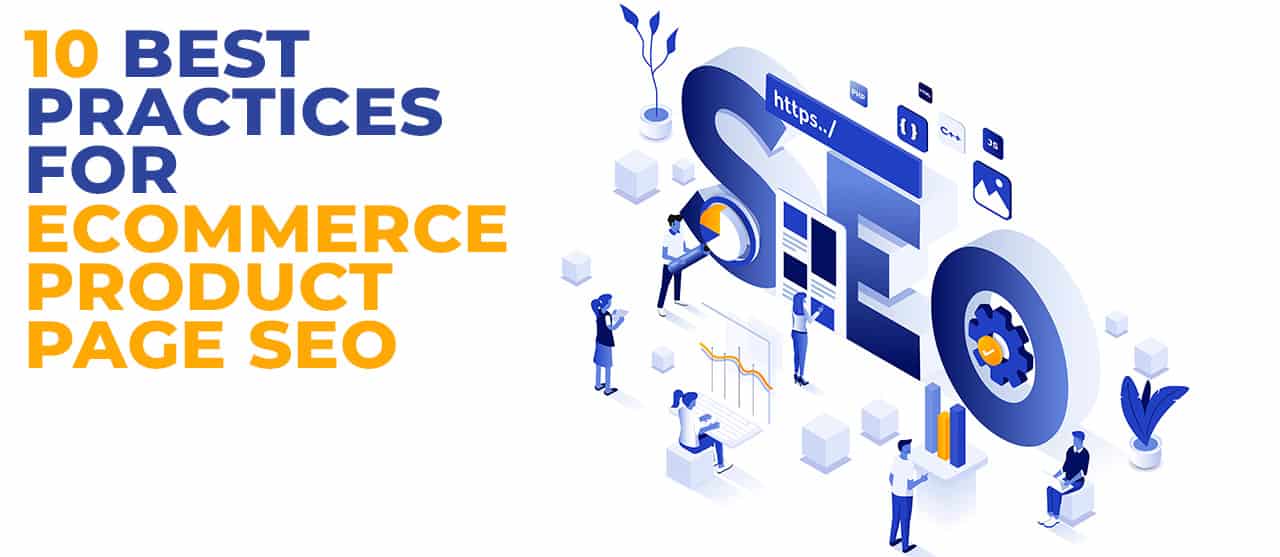
If you are an eCommerce store owner, you must get the product page SEO right. Here is why:
- 6% of eCommerce orders are directly linked to organic traffic.
- 44% of people start their online shopping journey with an organic search engine.
- 43% of all eCommerce traffic comes from organic Google search results.
Having an optimized product page for the eCommerce website is essential, especially in the post-pandemic era when people have started to prefer online shopping over brick-and-mortar stores. Here’s a rundown of the best practices to do so:
1. A Well-Planned Keyword Strategy
According to Ahrefs, 0.16% of the most popular keywords are responsible for 60.67% of the searches. Searching for something online and finding a brand on the first page implies they have employed a powerful keyword strategy. When conducting keyword research, you must always use product-focused keywords that link to the search intent.
Besides, product pages are created with transactional intent, so you must ensure the landing pages are well-optimized to sell. Using SEO tools like SEMrush, Ahrefs, and other free tools like Google Keyword Planner can prove handy. They can help establish knowledge around keyword search volume, ranking difficulty, and search intent of the given keyword.
2. Optimize The Title And Meta Description
The title tag and meta description explain the content on the web page. When customers are searching for a product, they first see a combination of title tags and related meta descriptions on the SERP.
The title tag and meta description must include the following:
- Product name
- Product’s name
- Model number (if applicable)
- Other product information (preferably the USPs)
3. Structured Data For Product Pages
Structured data is crucial for SEO as it makes it easy for Google to comprehend the pages and products on the website. This accrues various benefits like higher click-through rate (CTR), greater search visibility, easier indexing, etc. In fact, using structured data can result in a 400% growth in organic traffic and a 160% increase in impressions.
Marking up structured data means creating a code for structured data that helps organize the web page content. In terms of SEO, you need to ensure that your product page content is organized, making it easy for Google to show your content in an attractive and organized manner.
4. Add FAQs
It’s natural for a visitor to have questions about the product. Having an FAQ section with answers that customers usually ask will make it easy to make the buying decision.
More profoundly, FAQs help in the following ways:
- They help improve the user journey by addressing all the customers’ needs.
- They contribute to high-quality and relevant content, which helps to improve the page’s ranking.
5. Unique Product Description
One of the most common mistakes made by various eCommerce sites is using the same product description for all the products. As such, they miss out on many opportunities. The product description you write must provide all the information about the particular product, the price, the different features, benefits, and so on. Ideally, this copy should convince customers to check out the product and increase sales.
6. Real Testimonials And Customer Reviews
According to recent research, more than 90% of customers read online reviews before committing to a purchase. When a customer drops a review or testimonial on the website and others see it, it persuades the audience to try out the product.
The best practice is to subtly ask the customers to add their experiences of using the product and explain how it solved their problems. Mark the reviews with the review schema and keep updating them regularly.
7. Test Landing Pages
You can nail your product page optimization strategy by A/B testing. It is imperative to test the landing pages to improve the SEO score. A good practice is to tweak the position of various elements in the site layout and see which orientation is helping improve the site conversions. Doing so will help you determine what works well for your brand and drive more sales.
8. Use High-Quality Media
High-quality images and videos complement the product information and convince the users to purchase — adding to a seamless user experience. For instance, you can showcase what the product looks like in different colors, how the product is packed, how it works, etc.
Perhaps you can create a video to demonstrate how it functions. As a rule of thumb, the product images should be sharp, informative, and compelling. The color difference between the real product and the images should be in sync. Also, ensure a consistent image resolution for all the products you list.
9. Improve Page Loading Speed
40% of consumers wait for only three seconds before leaving the website. So, ideally, the product page must load within two to three seconds. Simply put, a fast website offers your customer a better user experience and a smooth online shopping experience, reducing the website bounce rate.
One of the best practices to improve page loading speed points at optimizing the code and removing unused code. Other interventions include leveraging browser caching, employing content distribution networks (CDNs), optimizing on-page media, etc.
10. Conduct An Audit For Technical Issues
Often, website owners overlook the technical SEO aspects, which can result in many SEO problems like duplicated content, wasted crawl budget, and split link equity. To avoid these issues, you need to conduct a technical SEO audit. You need to check for the following:
- Duplicated title tags and SEO description
- Slow page load times
- Broken links
- 404 pages
- Thin content
- 302 redirects
- Missing structured data
Conclusion
Now that you know the critical elements required to drive your product page SEO, you can optimize your site and lay the bedrock for a flourishing online business. At EnFuse Solutions, we help foster eCommerce excellence by managing catalog-related data and driving competitive intelligence. So, if you’re ready to take your eCommerce business to the next level, let’s talk.
Leave a Reply
Your email address will not be published. Required fields are marked *

















Comment